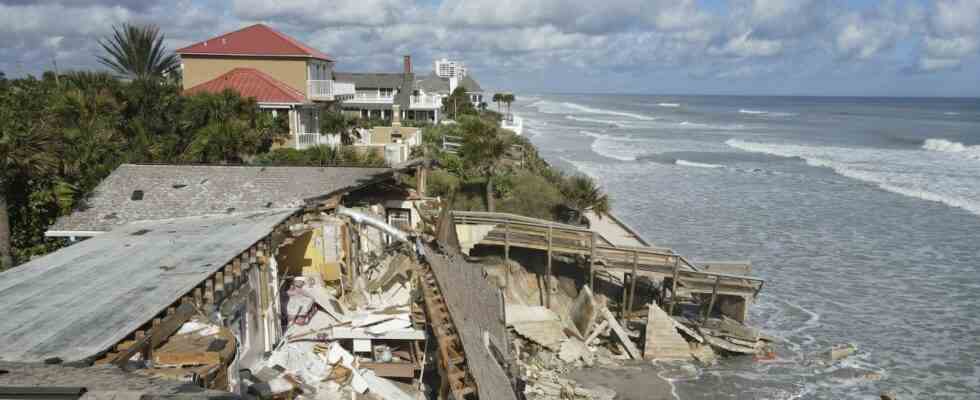Kay, ian, Roslyn, Nicole: When hurricane after hurricane comes in from the East Pacific or Atlantic and hurls itself onto mainland Mexico and the United States, then it’s hurricane season. In itself nothing unusual. However, like typhoons in the western Pacific and cyclones in the Indian Ocean, hurricanes are no longer what they were 30 years ago: they have become stronger everywhere as a result of climate change. This is what scientists write about the atmospheric scientist Guihua Wang from the Fudan University in Shanghai in the journal Nature.
Climate models have predicted this for a long time. When the seas warm, the hurricanes can drain more energy and soak up more humidity. So far, however, scientists have found it difficult to prove that the storms have already become stronger. No clear trend could be derived from the observation data. This was mainly due to the measurement methods: aircraft can only be used to a limited extent to record the wind speed of the hurricanes. Such measurement campaigns were largely limited to the Atlantic. Although satellites can be used to continuously monitor hurricanes over a large area, clouds, rainfall and spray make visibility and thus the interpretation of the images difficult.
That’s why Wang and his colleagues used a trick: They concentrated on the ocean currents near the water’s surface. Because a measuring method that has been reliable for years has been available for this purpose: Beginning in 1979, the US climate agency NOAA has been distributing measuring buoys; more than 25,000 of these devices are now floating in the world’s oceans. Attached to the buoys is a funnel-shaped nylon sack that scientists affectionately call the “holy sock.” It ensures that the instruments glide smoothly through the warm surface water and measure accurately even in a strong storm.
So far there is too little data on the strongest storms
The evaluation of the data from the years 1991 to 2020 showed that the ocean currents below the cyclones have indeed become stronger everywhere – by an average of around 144 meters per hour with each decade. From this, the scientists were able to draw conclusions about the wind forces acting on the sea surface and deduce that the wind speed of the storms has also increased: by the equivalent of 6.5 kilometers per hour per decade.
However, for the time being, this only applies to the weaker hurricanes and tropical storms, restrict Wang and his colleagues. Because the data set for the rarer, stronger storms is still too small. Only in the North Pacific were there enough measuring buoys that crossed the path of category 4 and 5 storms and recorded sufficient data.
Atmospheric scientist Robert Korty from the University of Texas believes, however, that Wang’s data are sufficiently meaningful even for the strongest hurricanes and typhoons. Older studies have already shown that these have been occurring more frequently since the 1970s. “All of this certainly leaves little doubt that tropical storms around the world have intensified over the past 30 years,” Korty wrote in a comment in Nature.
This means that the hurricanes can potentially cause more damage – through strong winds, storm surges and floods. There is also a factor that has long been underestimated: hurricanes, cyclones and typhoons can also amplify heat, as was the case recently a study in the journal Geophysical Research Letters showed. According to this, tropical storms and hurricanes on Caribbean islands caused temperature jumps of up to five degrees Celsius for days after the storm subsided, even in areas that were not directly affected.

